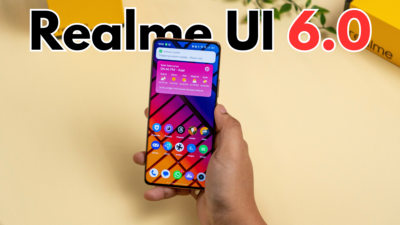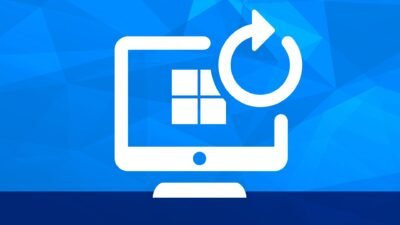Techniques for Remote Mobile Phone Monitoring without Physical Contact

In today’s digital age, mobile phones have become an integral part of our lives, containing a wealth of personal information. However, there may arise situations where the need to monitor someone’s mobile phone arises, such as parental concerns or suspicion of unauthorized activities. Traditionally, gaining access to a mobile phone for monitoring purposes required physical contact, posing challenges and limitations.
Fortunately, advancements in technology have paved the way for remote mobile phone monitoring techniques without the need for physical access. These innovative methods offer a range of possibilities for individuals seeking to monitor mobile phone activities discreetly and remotely.
This article explores various techniques for remote mobile phone monitoring without physical contact. We will delve into cutting-edge technologies and applications that enable users to access text messages, call logs, browsing history, and even GPS location data from a targeted device, and cell phone track software without a target phone here. From monitoring your child’s online activities to safeguarding sensitive business information, these techniques provide a viable solution for individuals concerned about the well-being and security of their loved ones or organizations.
Throughout the article, we will discuss both legal and ethical considerations associated with remote mobile phone monitoring to ensure the responsible use of these techniques. Additionally, we will provide insights into the limitations, risks, and potential challenges that may arise when employing such monitoring methods.
Whether you’re a concerned parent, a business owner, or an individual seeking to protect your personal interests, this article aims to equip you with the knowledge to make informed decisions about remote mobile phone monitoring without physical contact.
Considerations associated with remote mobile phone monitoring
When engaging in remote mobile phone monitoring without physical contact, it is crucial to address the legal and ethical implications to ensure the responsible and respectful use of these techniques. While the specifics may vary depending on the jurisdiction, it is essential to understand and comply with local laws regarding privacy, data protection, and surveillance.
From a legal standpoint, it is important to obtain proper consent from the device owner before initiating any monitoring activities. Consent requirements may vary based on the context and the relationship between the parties involved. It is advisable to consult legal experts to ensure compliance with relevant laws and regulations in your jurisdiction.
Ethically, it is vital to consider the principles of privacy and trust. Remote mobile phone monitoring should be used responsibly, respecting the boundaries of individuals’ personal lives and information. Monitoring should be justified by legitimate reasons, such as ensuring the safety of minors or protecting the interests of a company. Transparency and open communication with the individuals being monitored is essential to maintain trust and foster a healthy relationship.
Moreover, it is crucial to use remote monitoring techniques solely for the intended purpose and not misuse the gathered information. Care should be taken to handle sensitive data securely and avoid any unauthorized dissemination or misuse that may infringe upon the privacy rights of individuals.
By adhering to legal requirements and ethical principles, individuals can ensure responsible use of remote mobile phone monitoring techniques, striking a balance between protecting their interests and respecting the privacy and rights of others.
Various techniques for remote mobile phone monitoring
Several techniques have emerged that enable remote mobile phone monitoring without the need for physical access. One widely used method is through the installation of monitoring software or applications. These software solutions, often referred to as spy or monitoring apps, can be installed on the target device either through direct access or by sending a link for remote installation. Once installed, they provide comprehensive access to various phone activities, including text messages, call logs, browsing history, social media interactions, and even real-time GPS location.
Another technique involves leveraging cloud-based services. Many mobile devices are linked to cloud accounts, such as Apple iCloud or Google Drive, which automatically synchronize data. By obtaining login credentials or exploiting security vulnerabilities, remote monitoring can be achieved by accessing the cloud account. This method allows users to view contacts, photos, videos, and other data stored on the device without direct physical access, celltrackingapps.
Additionally, remote mobile phone monitoring can be facilitated through remote desktop applications. These applications allow users to access and control the target device from a remote location. By establishing a remote connection, users can view the phone screen in real-time, access files and applications, and monitor activities as if they were physically interacting with the device.
It is worth noting that these techniques may require varying degrees of technical expertise and may have limitations depending on the operating system, device security measures, or software compatibility. It is important to research and select reputable and reliable solutions to ensure effective and secure remote monitoring without physical contact.
Conclusion
In conclusion, remote mobile phone monitoring without physical contact has become increasingly feasible with advancements in technology. This article has explored various techniques that enable individuals to monitor mobile phone activities discreetly and remotely. However, it is essential to approach these methods with legal and ethical considerations in mind.
Responsible use of remote mobile phone monitoring involves obtaining proper consent from the device owner and complying with local laws and regulations. Adhering to ethical principles of privacy and trust is equally important, emphasizing transparent communication and justified reasons for monitoring. Balancing the need to protect interests with respecting the privacy and rights of individuals is crucial for maintaining healthy relationships.
The discussed techniques include the use of monitoring software or applications, leveraging cloud-based services, and utilizing remote desktop applications. Each method offers distinct advantages and limitations, and careful consideration should be given to factors such as technical expertise, device compatibility, and security measures.
It is crucial to emphasize that remote mobile phone monitoring should only be employed for legitimate purposes, such as ensuring the safety of loved ones or protecting business interests. Misuse or unauthorized dissemination of monitored information is ethically unacceptable and may result in legal consequences.
As technology continues to evolve, the landscape of remote mobile phone monitoring will likely evolve as well. It is essential for individuals to stay informed about the latest legal and ethical guidelines and remain vigilant in their approach to responsible monitoring.
By navigating the complexities of remote mobile phone monitoring without physical contact responsibly, individuals can strike a balance between safeguarding their interests and respecting the privacy and rights of others. Ultimately, responsible use of these techniques can contribute to fostering trust, maintaining security, and ensuring the well-being of individuals and organizations alike.
Research Snipers is currently covering all technology news including Google, Apple, Android, Xiaomi, Huawei, Samsung News, and More. Research Snipers has decade of experience in breaking technology news, covering latest trends in tech news, and recent developments.












